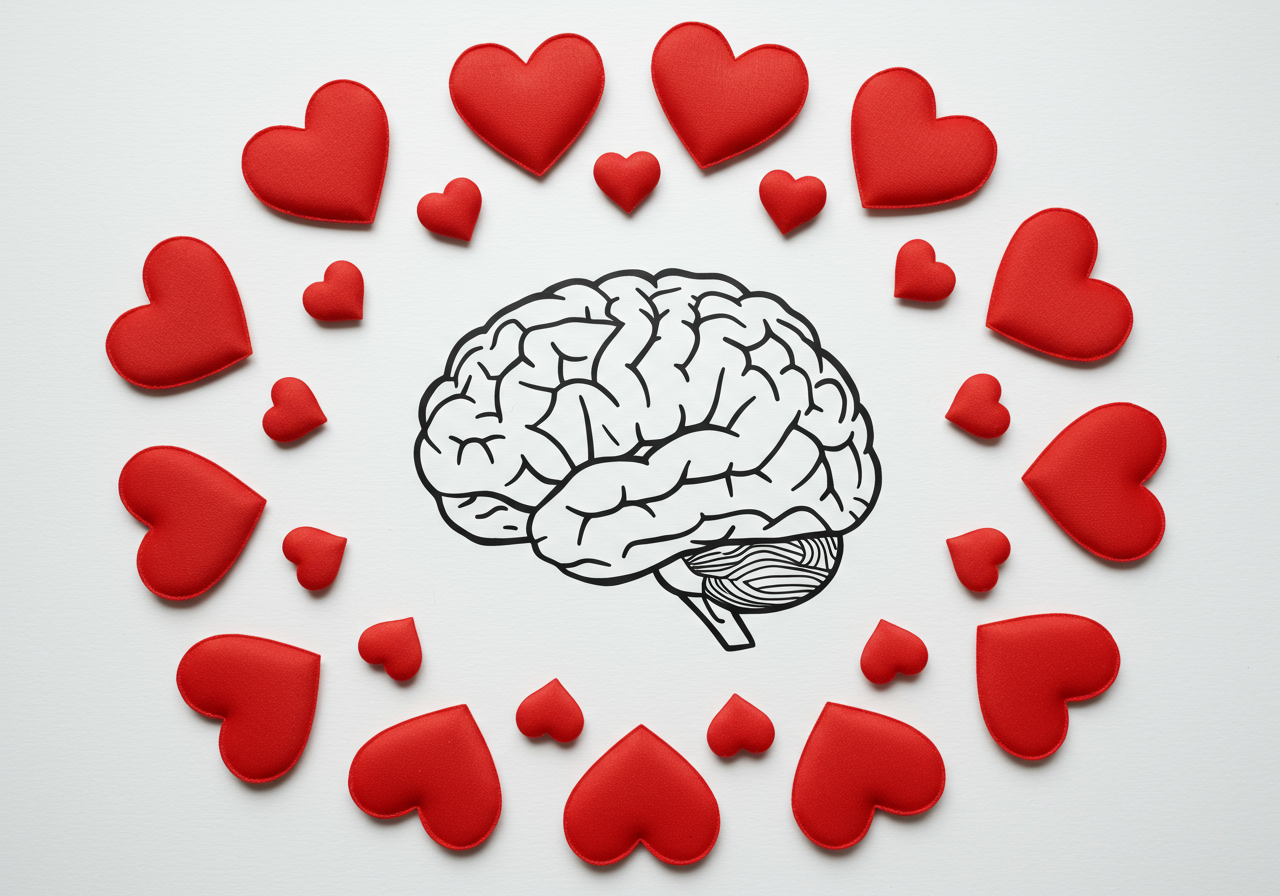6 Ways Your Brain Experiences Love—Explained By A Psychologist
Forbes September 14, 2024
Lifestyle

Forbes September 14, 2024
Lifestyle

Words often fail to describe how fervent of a force love is—in all its forms. Whether you’re falling head over heels, holding your child for the first time or simply basking in the beauty of the world around you, love shapes our lives deeply. But have you ever wondered what’s really happening in your brain when you feel these different kinds of love?

An insightful August 2024 study published in Cerebral Cortex holds the answer. Through rigorous experimentation, the researchers take us inside our own heads—showing how the brain experiences six distinct types of love, as well as how each lights up different neural pathways. From love for humans and animals to the love we have for Mother Nature, the study reveals which kinds of love hit hardest—and why.
Romantic love is often seen as one of the most intense and all-consuming types of love. It’s a kind of love that both physically and mentally overpowers us, and this intensity is reflected in the study’s fMRI results. The authors found that when people think about their romantic partners, several key areas of the brain light up—especially those involved in emotions, decision-making and memory.
The brain regions that are activated during romantic love include the areas associated with pleasure and reward, such as the striatum and orbitofrontal cortex. These are the same areas that respond in situations that we find rewarding, like while we eat good food or win a game. This might explain why romantic love can feel so exhilarating—as it’s literally rewarding to your brain. Moreover, the activity in the brainstem—which plays a role in regulating basic bodily functions—suggests that romantic love can have a deep, almost primal impact on us.
While some may reduce romantic love to nothing more than a “chemical reaction,” the study exemplifies how powerful a force this reaction can have. This love is not the fleeting kind, but a deeply impactful one that can influence our thoughts and actions at a fundamental level.
Parental love is another deeply powerful emotion, often described as unconditional and selfless. It’s the love that drives parents to protect and nurture their children—sometimes even at great personal cost. This kind of love is crucial for the survival and well-being of offspring, which too is reflected in the brain’s response.
The brain areas activated during parental love overlap significantly with those involved in romantic love—which aptly highlights the strong emotional connection parents feel toward their children. However, there’s something unique about parental love: when parents imagine their children, there’s even more heightened activity in the brain’s reward system, particularly in the striatum and the thalamus. This suggests that the satisfaction and fulfillment parents derive from caring for their children are deeply rooted in our biology—and its rewarding nature may be more powerful than any other kind of love.
This heightened reward response may be why parental love feels so deeply fulfilling and why parents often describe their bond with their children as unlike any other. It’s a love that is both emotionally intense and profoundly gratifying—factors which are likely what drive us to ensure the well-being of the next generation.
Platonic love is a vital part of our social lives. Friends are an untapped source of support, companionship and a sense of belonging. While our love for our friends might not be as intense as for our partners or family, it nevertheless plays a crucial role in our happiness and mental health—which is clear from the study’s findings.
The researchers found that love for friends activates many of the same brain regions as romantic and parental love—just with less intensity. This suggests that while friendships are deeply meaningful, they don’t elicit the same level of emotional intensity as closer relationships. However, the brain regions involved in social bonding—like the temporoparietal junction and cingulate cortex—are still active, which speaks to the importance of friendships in terms of social well-being.
Interestingly, the brain also showed activity in areas related to understanding others and social cognition—such as the posterior superior temporal sulcus and the temporal regions—which might explain why good friendships often involve such a high level of empathy and understanding. It’s clear that while platonic love may not have the same fiery intensity as romantic love, it’s still a strong and steady force that enriches our lives in countless ways.
Love for strangers might sound odd at first, but it’s more about a general sense of goodwill or empathy toward people we don’t know personally—similar to the “neighborly love” we hear about in religious contexts. This kind of love is integral to social cohesion, and it helps us function in society by means of kindness and cooperation.
The brain’s response to love for strangers was much less pronounced than for closer relationships. There was some activity in areas involved in social processing and recognizing others, but it was not as widespread or intense. This makes sense, as our emotional investment in strangers is typically lower. Nevertheless, the activation seen in the cingulate cortex—a region strongly involved in empathy—shows that we certainly feel a concern for strangers. It doesn’t, however, evoke the deep, personal emotions that come with loving someone we know well.
This type of love, while less intense, still plays a crucial role in maintaining harmony and peace with those around us. It’s what pushes us to act altruistically and kindly toward others—even if we don’t have a personal connection with them.
For many people, pets are cherished members of the family. The love we feel for our pets is often strong—as they offer us an incredibly unique sense of comfort, companionship and joy. The researchers found this kind of bond to be particularly meaningful for those who have known and loved pets in their lifetime.
The study found that, similar to our love for humans, our love for pets activates brain regions associated with social bonding and pleasure—only with less intensity. However, people who own pets showed more brain activity when thinking about animals than those who don’t have pets. This finding attests to the uniqueness of a pet–owner relationship; it’s a love that can only be understood when you’ve experienced it for yourself.
Fascinatingly, the areas of the brain that were particularly active in pet owners—such as the precuneus and posterior cingulate cortex—are involved in self-reflection and processing social information. This likely explains why pet owners often feel a deep connection with their animals, viewing them as equally important members of their social circle as their human friends.
Love for nature is a unique kind of love that connects us to the world around us. It’s the sense of peace you might feel when walking through a forest, the tranquility that fills you when you’re near the ocean, or the awe you sense standing before a mountain. This type of love is essential for our well-being and can inspire behaviors that protect the environment.
When participants thought about nature, their brains showed activity in areas related to visual processing and spatial awareness, such as the fusiform and parahippocampal gyri. This is the only kind of love that was found to engage these brain regions—making it much unlike interpersonal love, which activates areas related to social bonding. This may mean that our love for nature—albeit weaker than other forms—stems from our appreciation for the beauty and vastness of the natural world, and motivates us to protect it.
Stay up to date on the latest real estate trends.

Seller
December 26, 2025
When your house doesn’t sell, it does more than disrupt your plans, it hits close to home.

Seller
December 23, 2025
Hearing talk about home prices falling? That may leave you worried about whether your house is losing value.

Seller
December 19, 2025
The housing market hasn’t felt this energized in a long time – and the numbers backing that up are hard to ignore.

Buyer
December 18, 2025
You may not want to put your homebuying plans into hibernation mode this winter.

December 18, 2025

Buyer
December 16, 2025
One of the biggest homebuying advantages you can give yourself today is surprisingly simple: a flexible wish list.
We Guide Homeowners through the complicated process of selling their home using our 4 Phase Selling Process and 3 Prong Marketing Strategy that alleviates their stress and moves them effortlessly to their next destination. Schedule a 15 Minute Complimentary Strategy Session Today